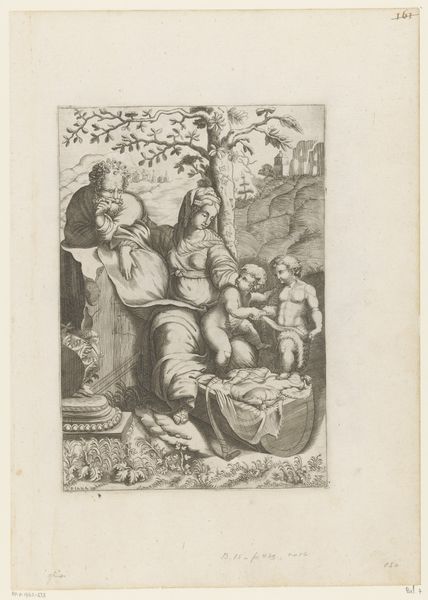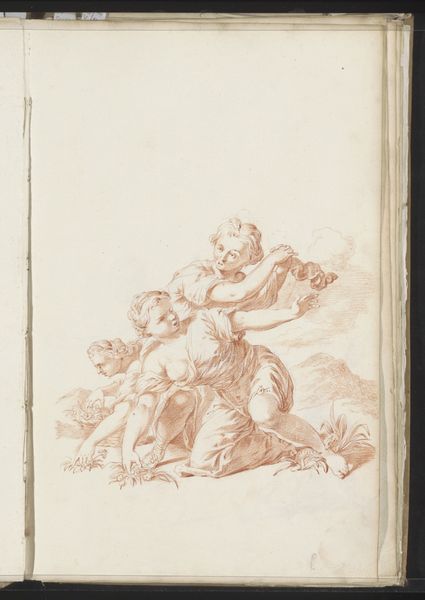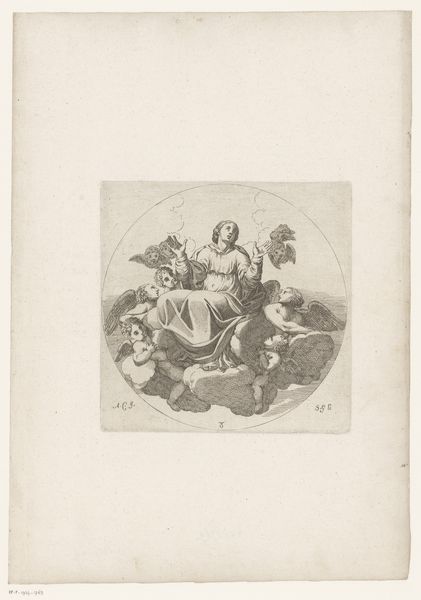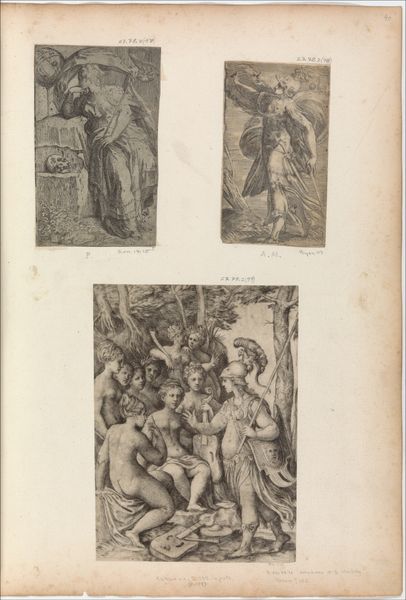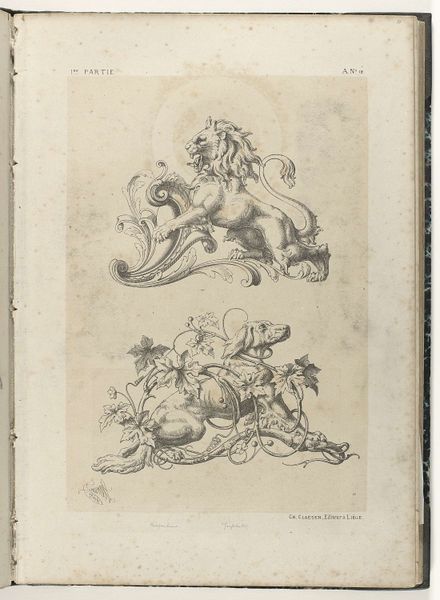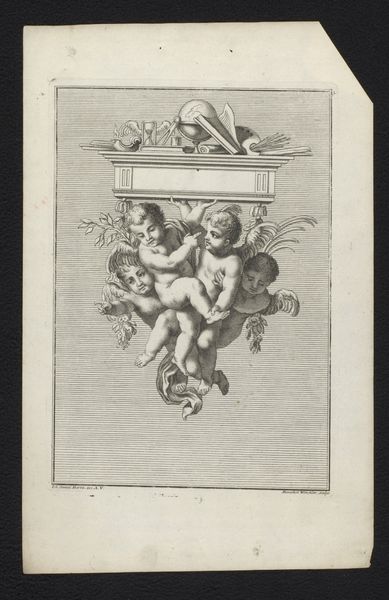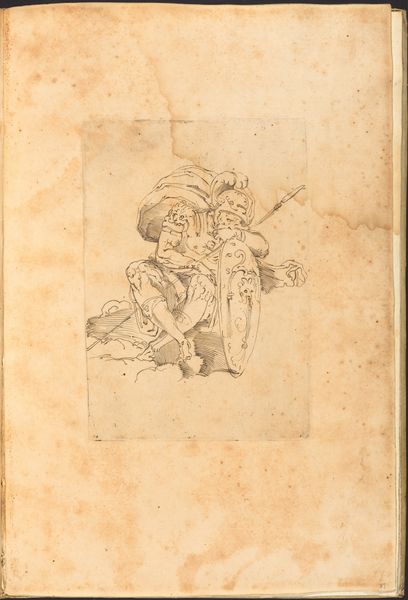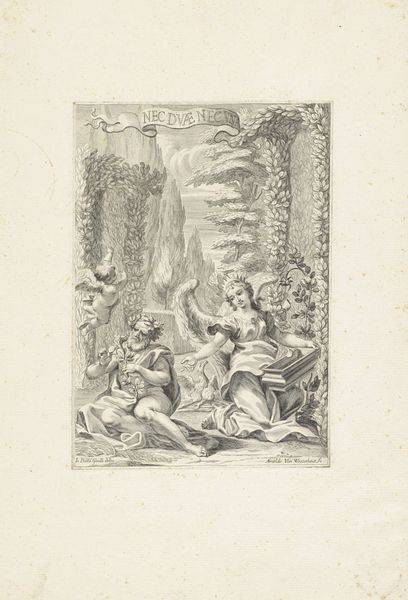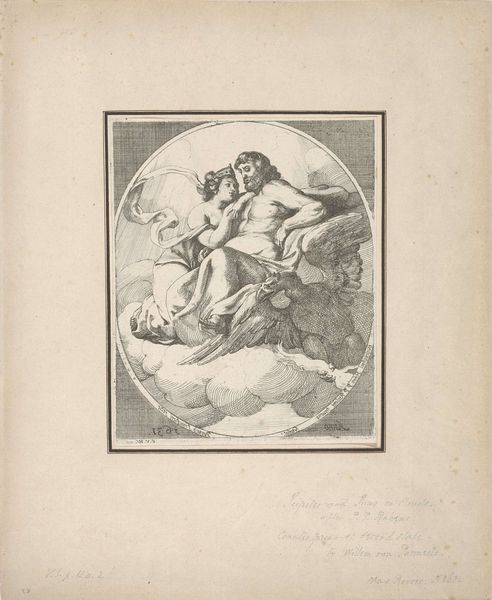
drawing, engraving
#
drawing
#
allegory
#
baroque
#
pencil sketch
#
figuration
#
engraving
Dimensions: height 246 mm, width 183 mm
Copyright: Rijks Museum: Open Domain
Editor: Here we have Pieter de Jode I's 1629 engraving, "Tekenvoorbeeld van drie putti op een wolk," which translates to "drawing example of three putti on a cloud." The hatching and stippling give such incredible volume to the cherubic figures, but what really strikes me is how it feels less like a depiction of divine beings and more like a study of the human form... almost clinical. What do you make of it? Curator: I see an exercise in labor, first. The very creation of an engraving requires physical toil. De Jode carefully planned the image, executed the lines, and made the print repeatable. Moreover, "Tekenvoorbeeld" suggests the artwork wasn't intended for display, but for workshop reproduction: a means of production. Do you see how the labor differs from high art and aligns more with craft production? Editor: I think so. The word "example" feels less like inspiration and more like instructions. So the clouds and cherubs almost feel secondary to its practical purpose? Curator: Precisely! The materiality also underscores that connection to labor. Think about the paper itself. Its sourcing, processing…the economics of its availability. Then consider the metal plate, the etching tools. All components within a network of production and consumption. Could the depiction of idealized figures then become, essentially, a commodity? Editor: That makes a lot of sense. De Jode’s work exists as part of an economic exchange. The means of production change how we value the art itself, shifting it away from the spiritual and towards something that is reproducible. I wouldn't have thought about that without considering the material elements of the work. Curator: Indeed, by examining the materials and the processes, we're not simply analyzing an image; we're understanding a complex interplay between art, labor, and society.
Comments
No comments
Be the first to comment and join the conversation on the ultimate creative platform.
